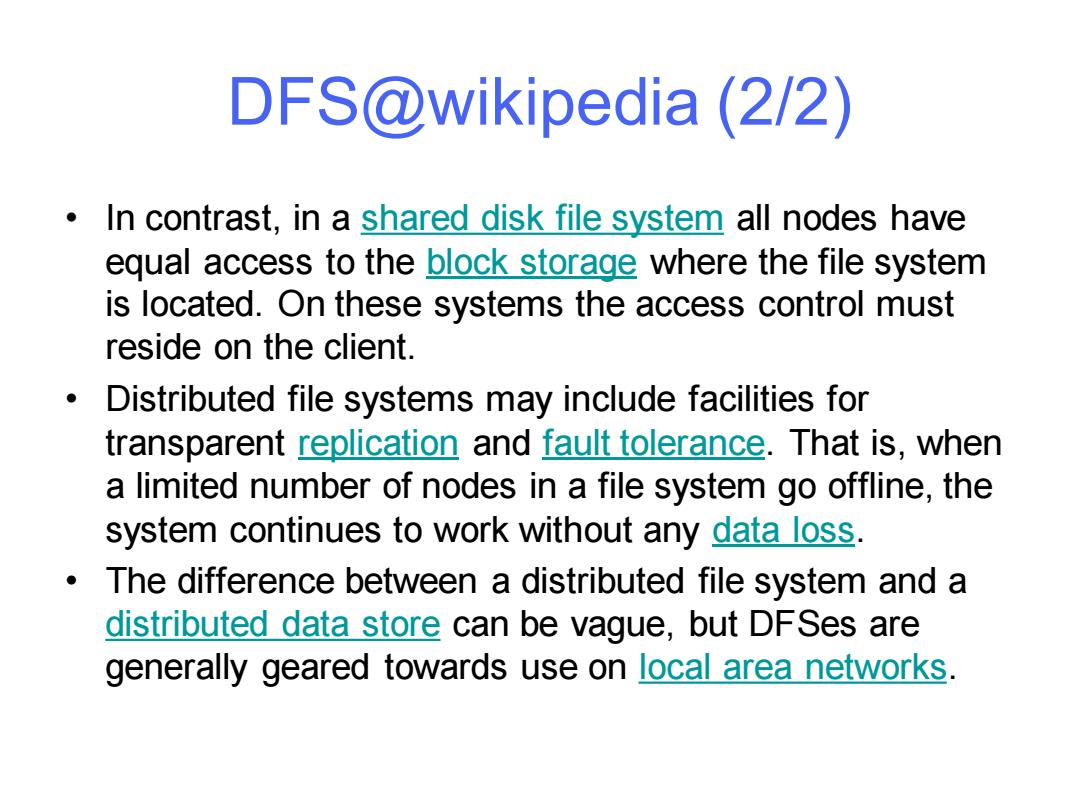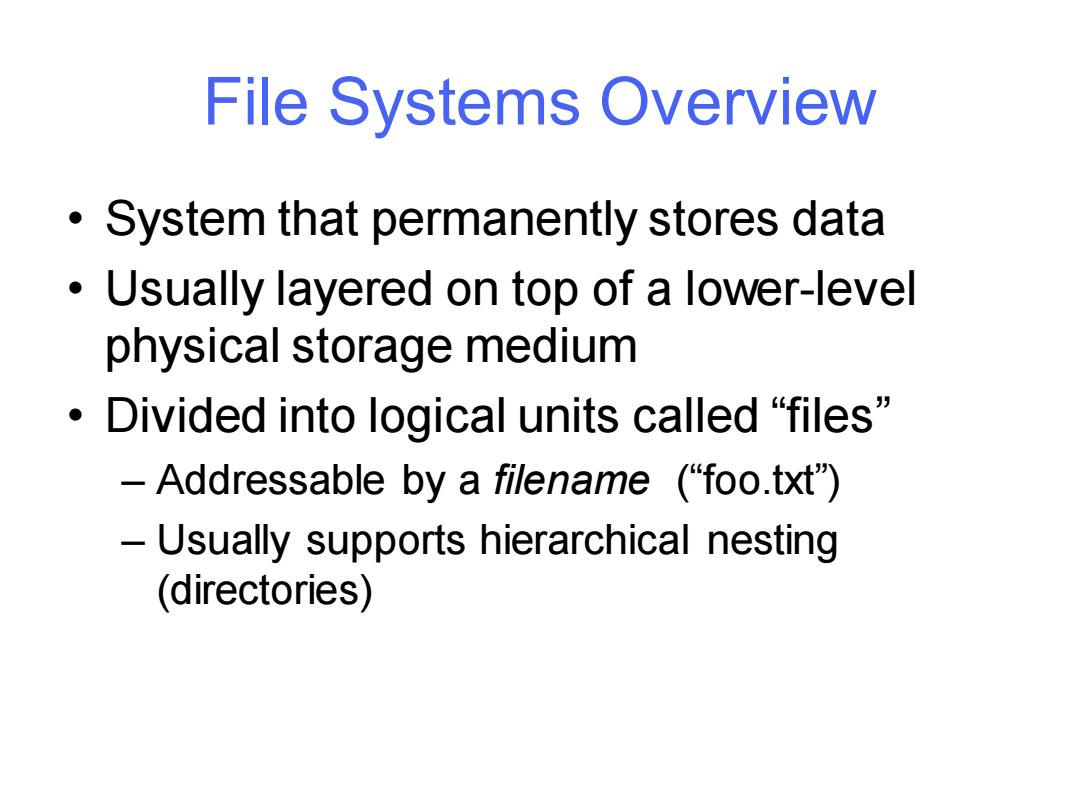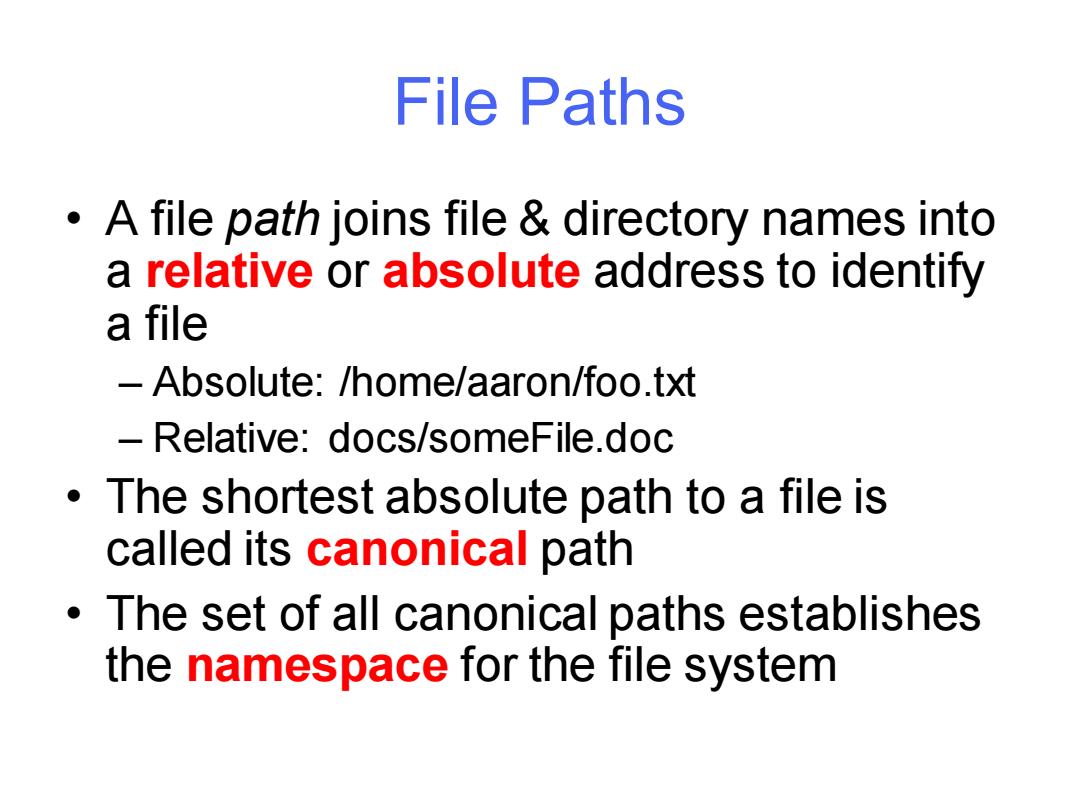
DFS@wikipedia(1/2) In computing,a distributed file system or network file system is any file system that allows access to files from multiple hosts sharing via a computer network.[1 This makes it possible for multiple users on multiple machines to share files and storage resources. The client nodes do not have direct access to the underlying block storage but interact over the network using a protocol.This makes it possible to restrict access to the file system depending on access lists or capabilities on both the servers and the clients, depending on how the protocol is designed
DFS@wikipedia (1/2) • In computing, a distributed file system or network file system is any file system that allows access to files from multiple hosts sharing via a computer network. [1] This makes it possible for multiple users on multiple machines to share files and storage resources. • The client nodes do not have direct access to the underlying block storage but interact over the network using a protocol. This makes it possible to restrict access to the file system depending on access lists or capabilities on both the servers and the clients, depending on how the protocol is designed

DFS@wikipedia(2/2) In contrast,in a shared disk file system all nodes have equal access to the block storage where the file system is located.On these systems the access control must reside on the client. Distributed file systems may include facilities for transparent replication and fault tolerance.That is,when a limited number of nodes in a file system go offline,the system continues to work without any data loss. The difference between a distributed file system and a distributed data store can be vague,but DFSes are generally geared towards use on local area networks
DFS@wikipedia (2/2) • In contrast, in a shared disk file system all nodes have equal access to the block storage where the file system is located. On these systems the access control must reside on the client. • Distributed file systems may include facilities for transparent replication and fault tolerance. That is, when a limited number of nodes in a file system go offline, the system continues to work without any data loss. • The difference between a distributed file system and a distributed data store can be vague, but DFSes are generally geared towards use on local area networks

Outline File systems overview NFS AFS (Andrew File System) ·Google File System
Outline • File systems overview • NFS & AFS (Andrew File System) • Google File System

File Systems Overview System that permanently stores data Usually layered on top of a lower-level physical storage medium ·Divided into logical units called“files” -Addressable by a filename ("foo.txt") -Usually supports hierarchical nesting (directories)
File Systems Overview • System that permanently stores data • Usually layered on top of a lower-level physical storage medium • Divided into logical units called “files” – Addressable by a filename (“foo.txt”) – Usually supports hierarchical nesting (directories)

File Paths A file path joins file directory names into a relative or absolute address to identify a file -Absolute:/home/aaron/foo.txt -Relative:docs/someFile.doc The shortest absolute path to a file is called its canonical path The set of all canonical paths establishes the namespace for the file system
File Paths • A file path joins file & directory names into a relative or absolute address to identify a file – Absolute: /home/aaron/foo.txt – Relative: docs/someFile.doc • The shortest absolute path to a file is called its canonical path • The set of all canonical paths establishes the namespace for the file system